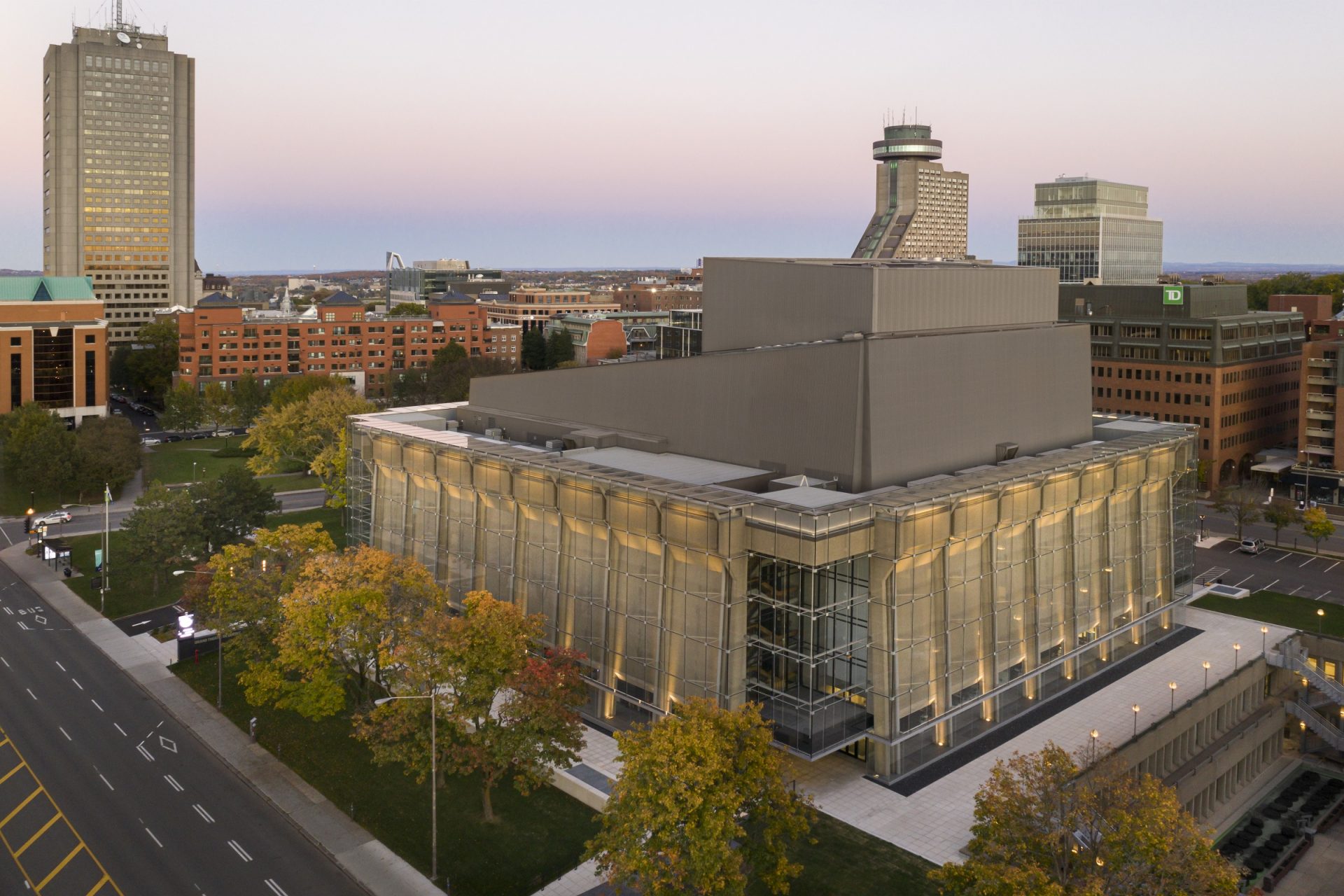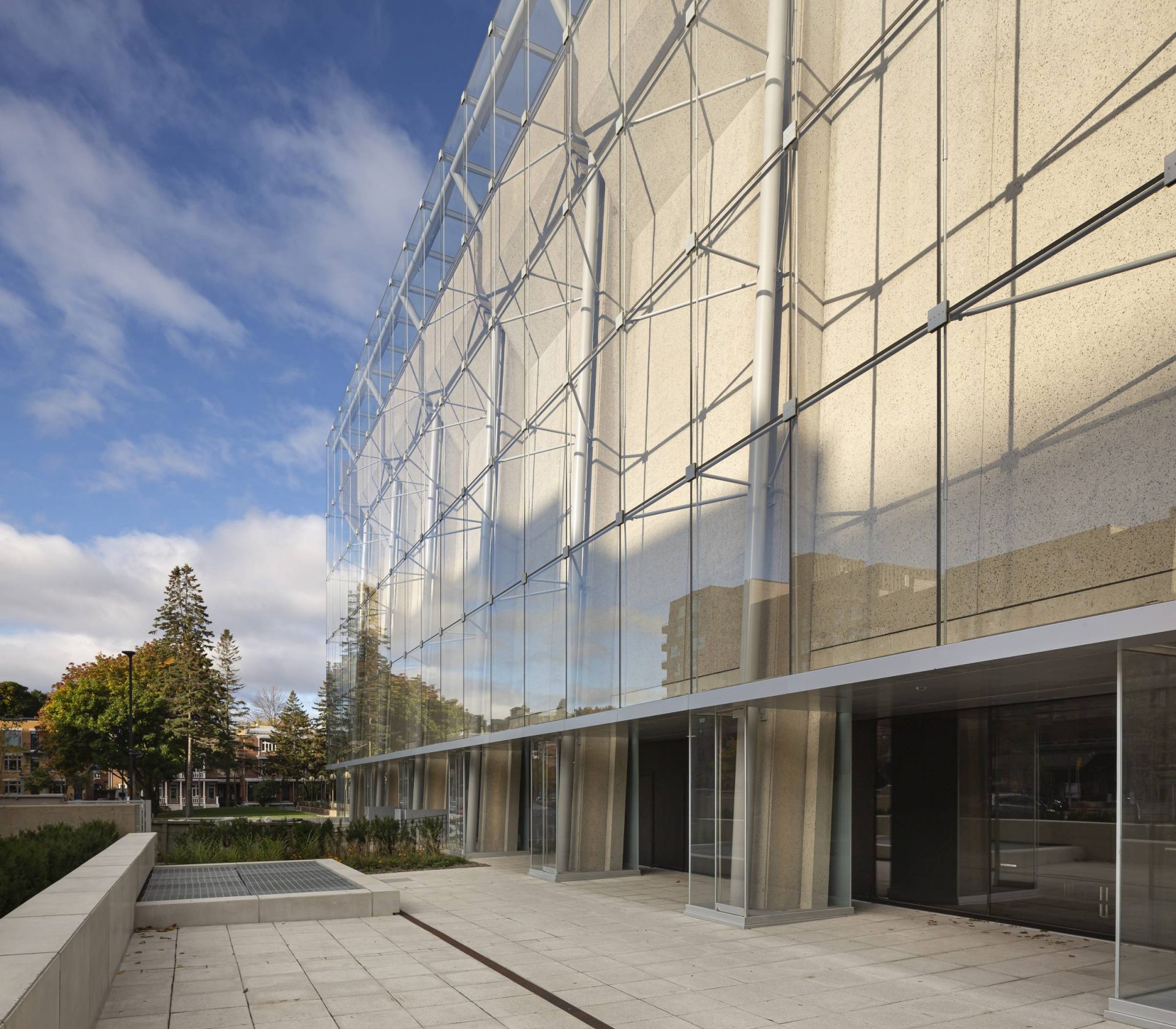Not only was there was no simple solution to the perilous state of Quebec City’s Grand Théâtre: there were none that would preserve its crumbling walls without altering its proportions, introducing new materials or damaging its priceless historic mural by Jordi Bonet.
“Transforming such an important icon from the Canadian brutalist era was a momentous responsibility,” said lead designer Eric Pelletier.
“It required an in-depth understanding of Victor Prus’ project, before adding a new and respectful act in dialogue with the initial work.”
The prefabricated concrete indoor and outdoor walls, intertwined with the mural, were disintegrating due to moisture infiltration. The building itself was too fragile to allow anything but the most minimal direct intervention. After studying a host of traditional solutions, the team of Lemay and Atelier 21 put forward a convincing design-build proposal that more than met the needs of the project while introducing a contemporary presence.
Intense and sustained collaboration among architects, engineers, construction specialists and manufacturers yielded a custom glass casing and discreet steel structure that also plays a structural role. The new envelope maintains the temperature and humidity necessary to preserve the building and the musical instruments inside.
It still amazes architect Gabriel Tessier to see just how closely our solution for the theatre resembles its design renderings. Perhaps a natural reaction for most projects brought to life, but even more significant for one that has no equivalent anywhere.
“We had no examples to work with, no reference projects,” said Gabriel, who has been working with the team to save the architectural icon ever since a design competition win six years ago.
“Everyone who worked on it had to be creative and bring an open mind to finding new solutions,” said Eric Pelletier.
The building’s brutalist lines are now beautifully showcased by the subtle and ecologically viable solution. The Grand Théâtre de Québec can continue as the main interface with the City, “for at least another 50 years.”
It’s truly something for Lemay’s employees to have worked on such an important cultural landmark, renowned for its groundbreaking architecture. The economical solution even allowed for other improvements to be made to the building’s illumination, signage and landscaping.
Now, with new photos just released, the surprise at the final result still lingers after five years of research, development and meticulous work.


